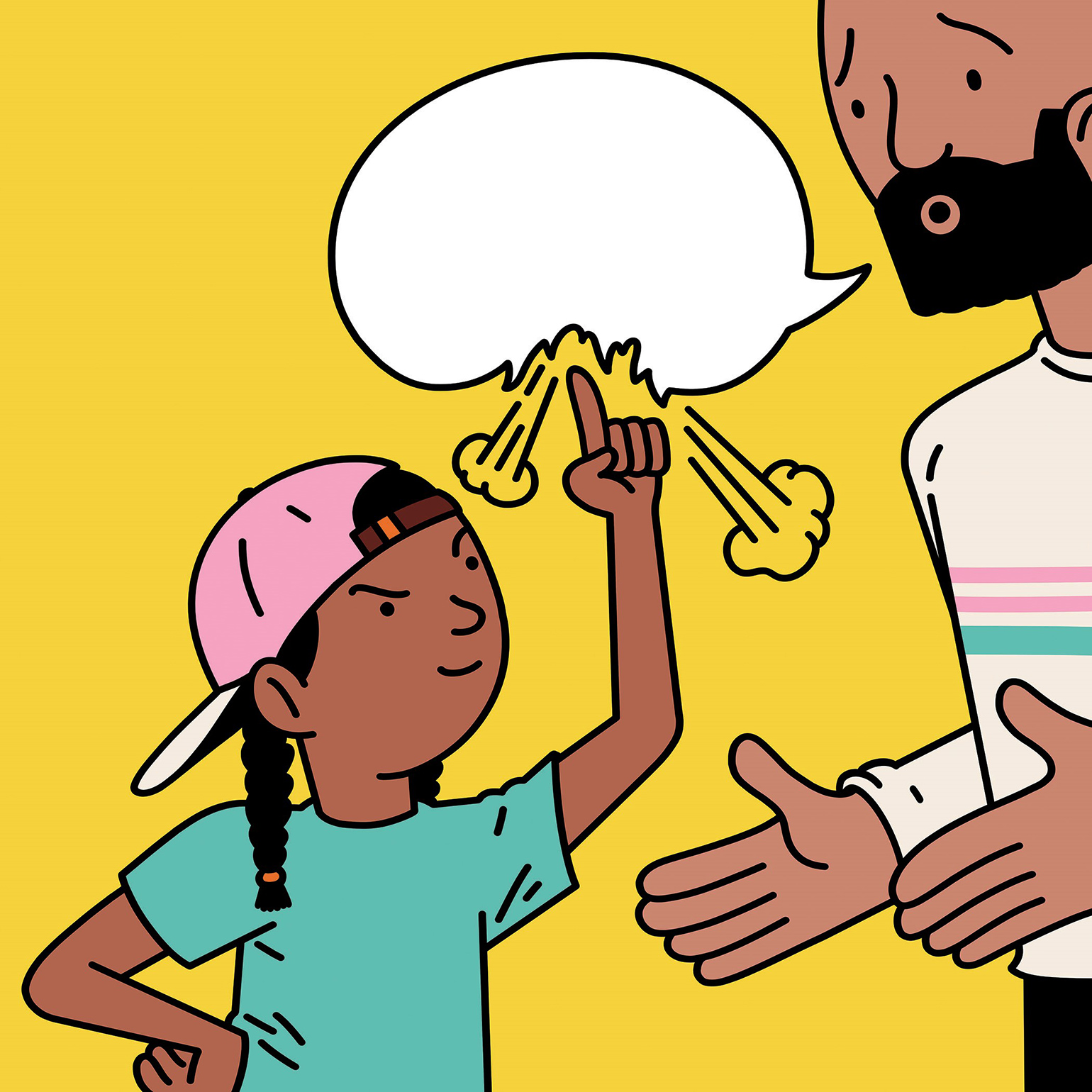It’s often said that conflict is the basis of any good story. For Prof. Samuel Ronfard, conflict is also essential to learning. “One of the most powerful things about having someone contradict you is that you can then have a conversation about your respective beliefs and arrive at a new one,” says the assistant professor of psychology at U of T Mississauga.
So when Ronfard – who heads UTM’s Childhood Learning and Development Lab – taught middle school in New York City several years ago, he would often invite students to challenge him. And yet he always found it a struggle to get kids to engage in conversation. “I would ask, What do you guys think? And usually the answer was, I think what you think.”
This kind of passivity may seem natural, but it could also present a major obstacle in children’s ability to learn. Ronfard believes that it behooves us as a society to encourage children to question and contradict adults when appropriate, and to think for themselves.
Consequently, Ronfard has spent the past half-decade drawing a global picture of how children test claims that go against their intuition. (His research has taken place in Canada, the U.S., Turkey, China and Belarus.) He and his team do this by getting some 600 kids from the ages of three to eight in a room with a series of differently sized Russian dolls. “We ask them, Which one is the heaviest? Correctly, they’ll usually say the biggest one, because if things look the same and are made out of the same materials you would of course think that.”
In half the cases, children are told they are wrong; the researchers then leave the room. Before doing so, however, they sometimes “implicitly prompt” the children by pushing the dolls toward them. They then watch through a hidden camera to see if the kids will test the claim.
His findings are clear: before age six, children will simply believe what adults tell them and not test it – even though they instinctively know the largest object is the heaviest. Indeed, work by other scientists has shown that even infants can understand basic physics; they show surprise, for example, when a toy car appears to go through a wall instead of crashing into it.
As children get older, skepticism kicks in. Once they reach the age of about seven they’ll test the dolls by picking them up. Ronfard says this is true of children in every country where he has performed the test, and is as true of boys as it is of girls. In doing so, children invariably find out that they are right.
Even then, they still won’t verbally contradict the adult researcher. “After a while, we come back and tell them, Oh, we were just talking about the dolls,” Ronfard says. The adults wait for 10 seconds, to allow for the child to reveal their new finding. Surprisingly, they hardly ever do. “A couple, out of hundreds of kids,” he says. “It’s really rare.”
One reason for this reluctance to speak up? “It may be adaptive for kids not to question everything they’ve been told and to accept statements at face value, because it may speed up their learning,” says Ronfard. He adds that a child’s decision to question an adult is based on two factors: epistemic (“Do I believe this based on what I know?”) and social (“Is it safe for me to question this person?”).
However, Ronfard has found that when children who have tested evidence are explicitly pushed to speak the truth, they will finally do it. And outside the lab, it’s certainly common to see children contradicting adults when their tales seem just a bit too tall. One example? That of Santa Claus.
Around the age of seven, children start to ask themselves how one elderly resident of the North Pole can possibly circumnavigate the globe in a single night, abseiling down millions of chimneys to bestow requested gifts on all the world’s children (with exemptions for the naughty, of course).
“They know there’s no causal mechanism that explains all this,” says Ronfard. “And what’s interesting is that parents will sometimes create new explanations, like Santa has a supercomputer or something.” Still, it’s developmentally common for children to skeptically explore such information – by rushing downstairs to see if the cookies they’ve so suspiciously laid out have been eaten, for example.
Still, getting children to explore questions for themselves is one thing; getting them to express their views in public is quite another. Finding out how to do that is Ronfard’s Holy Grail. “When you’re testing what you’ve been told there’s the aspect of truth, but also the aspect of going against an authority,” he says. “Maybe the kids are comfortable testing things when they’re left alone, but if their parents enter the room they won’t be as comfortable.”
Right now, he is paying particular attention to how variations in parenting across different cultures affect children’s willingness to speak up; whether, if a child grows up in an environment where disagreement is welcomed and encouraged, he or she may have a completely different attitude about how knowledge is constructed. “When you get that attitude at home, you could take it with you into other relationships and interactions with people,” says Ronfard.
BAH, HUMBUG
When, and how, did people realize Santa was a myth? The Santa Survey from the University of Exeter found the following:
The average age that children stopped believing in Santa: 8
Percentage who said their trust in adults had been affected by the discovery: 30
Percentage of those who played along with the Santa myth, as children, after they stopped believing: 65
One of the main reasons children stopped believing in Santa? Mistakes by blundering parents. One caught their parents eating the food left out for Santa. Another was woken by a tipsy dad dropping the gifts.
Recent Posts
People Worry That AI Will Replace Workers. But It Could Make Some More Productive
These scholars say artificial intelligence could help reduce income inequality
A Sentinel for Global Health
AI is promising a better – and faster – way to monitor the world for emerging medical threats
The Age of Deception
AI is generating a disinformation arms race. The window to stop it may be closing






5 Responses to “ How Kids Learn to Think Critically ”
Great article - very enjoyable read. Wondering if kids tested would show same results if one substituted the Easter Bunny or Tooth Fairy for Santa Claus. I suspect so.
Very interesting article, an eye opener.
Great write-up. It's made me consider my approach with my kids when they're talking back. Perhaps more questioning than direction, when appropriate. Thanks!
As an educator I found this a very good article. My classroom and my home sound just like this! I would really love to see the actual study results. Is this possible? I was curious though: isn't 'talking back' something done rudely I.e "go do your homework" which is responded to by a "no, I don't want to to"; versus questioning/contradicting truth which is what this article is implying? I believe there is a difference. Perhaps the actual research begins by defining this variable but as an article, the sub-heading is a bit misleading.
Very interesting article, especially regarding the "talk back" as most children are taught to never talk back to a parent or elder.